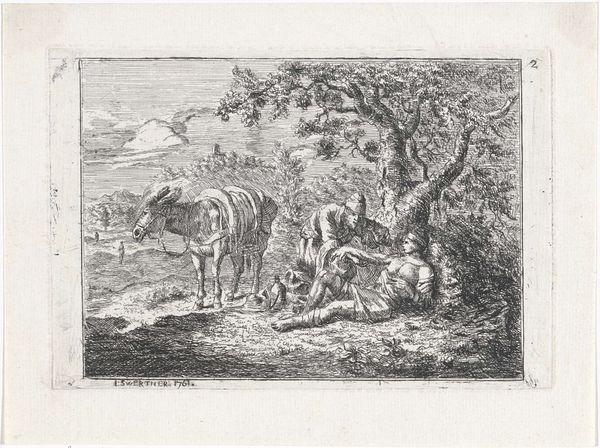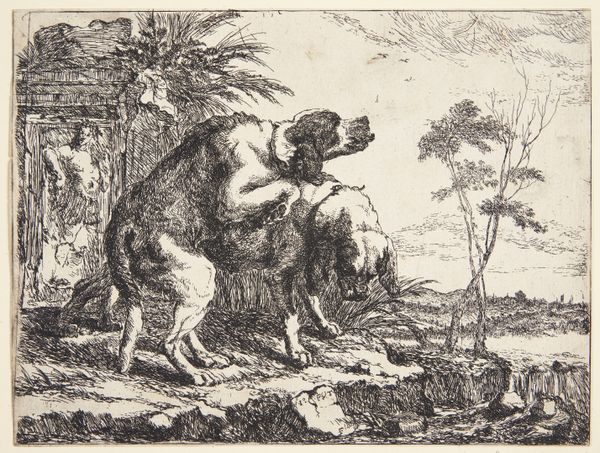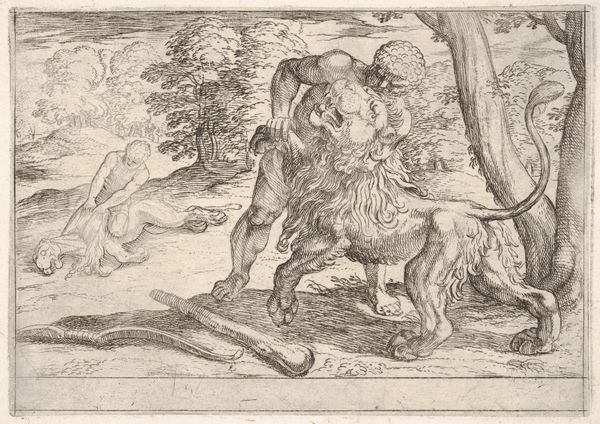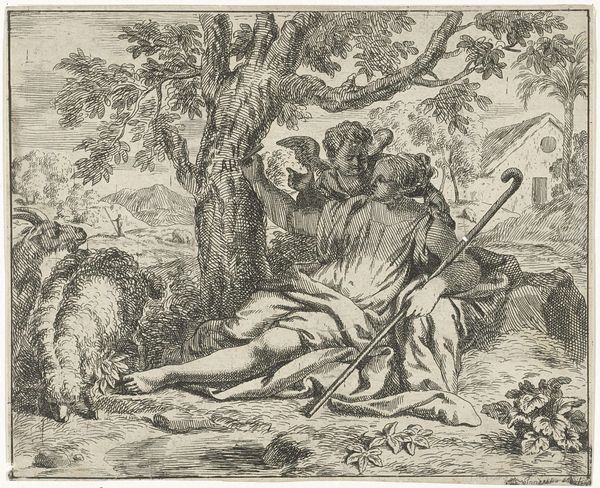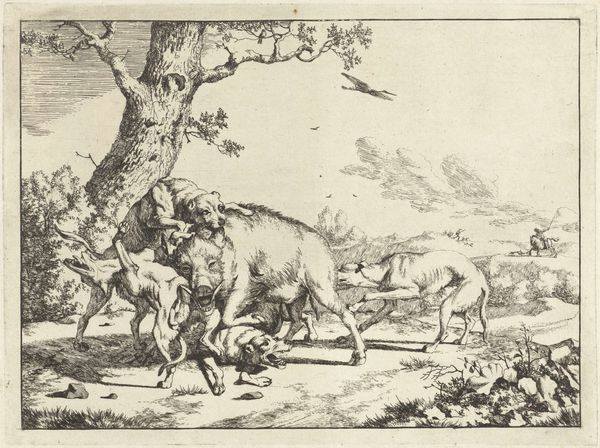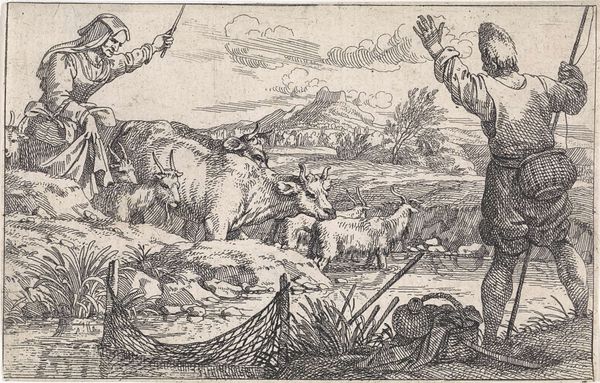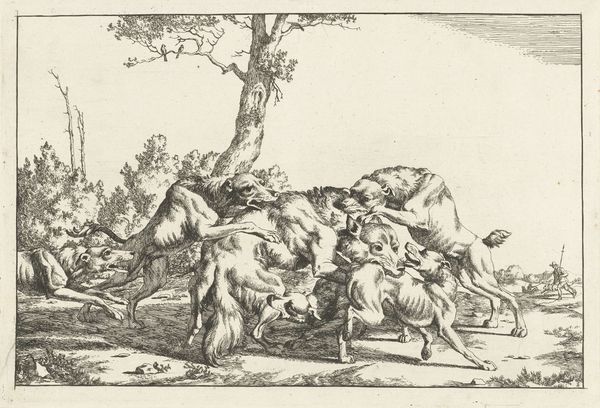
drawing, print, etching
#
drawing
#
baroque
#
mechanical pen drawing
# print
#
pen illustration
#
pen sketch
#
etching
#
pencil sketch
#
landscape
#
figuration
#
personal sketchbook
#
sketchwork
#
pen-ink sketch
#
pen work
#
sketchbook drawing
#
genre-painting
#
sketchbook art
Dimensions: height 108 mm, width 111 mm
Copyright: Rijks Museum: Open Domain
Curator: Here we have a Dutch Golden Age etching, dating probably from the late 17th century, called "Landschap met twee rustende koeien", or "Landscape with two resting cows". It's an anonymous work, showcasing a pastoral scene. Editor: There's something immediately serene about it. The cross-hatching and layered lines give a lovely depth. I almost feel as if I can smell the grass and warm earth! Curator: Indeed, the technique employed –likely etching in its original execution– speaks to a meticulous process of mark-making. Think about the labor involved, the craftsman carefully biting lines into a copper plate. What socioeconomic class would be able to possess or trade a print such as this, and how was this luxury provided? Editor: Absolutely, and these kinds of scenes often idealized rural life, perhaps as a counterpoint to the rapid urbanization happening at the time. It’s interesting to consider that even images of 'simple' countryside contain a complex ideological framework that centers the relationship between labor and idyllic settings as commodified experience. These animals even now signify that. What stories might farmers in this historical time be expressing in this visual rhetoric? Curator: That is so incisive and interesting, isn’t it? And yet there's an aspect of practicality. Landscape prints like these were quite marketable. Etchings such as this were quite easy to replicate, so that they might have mass-production on a small scale. A good way to earn a living and also give glimpses of a very local place. Editor: The rendering itself highlights material concerns. Those closely packed lines, defining shape and light. A political and ecological impact may or may not be understood, but it does give clues about ways that even images reflect changing society with changing production capabilities. Curator: Very well said. It's a wonderful demonstration of technique. Thinking of the etching process... Editor: Precisely. In examining all this, perhaps the art becomes not just a rendering, but something that pushes viewers to consider what sort of future this image may predict. Curator: Considering how images shape our engagement with work— and, perhaps also, with each other— what an interesting journey for us. Editor: A necessary point, for the viewers here, and maybe one we will all better attend in thinking of how society comes together.
Comments
No comments
Be the first to comment and join the conversation on the ultimate creative platform.
